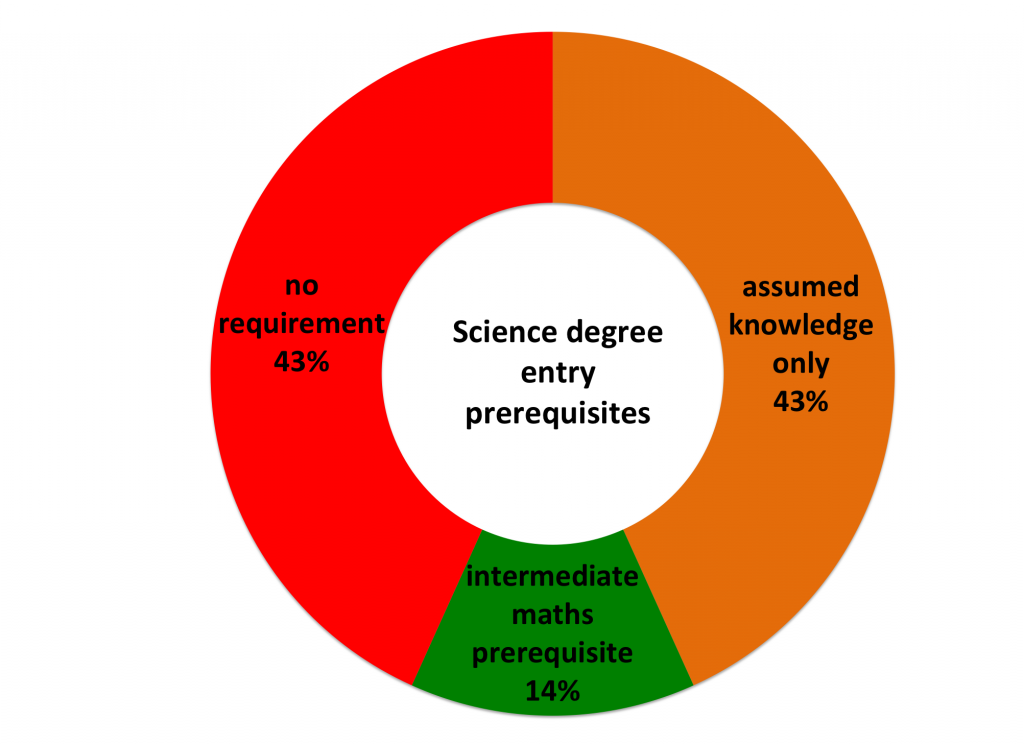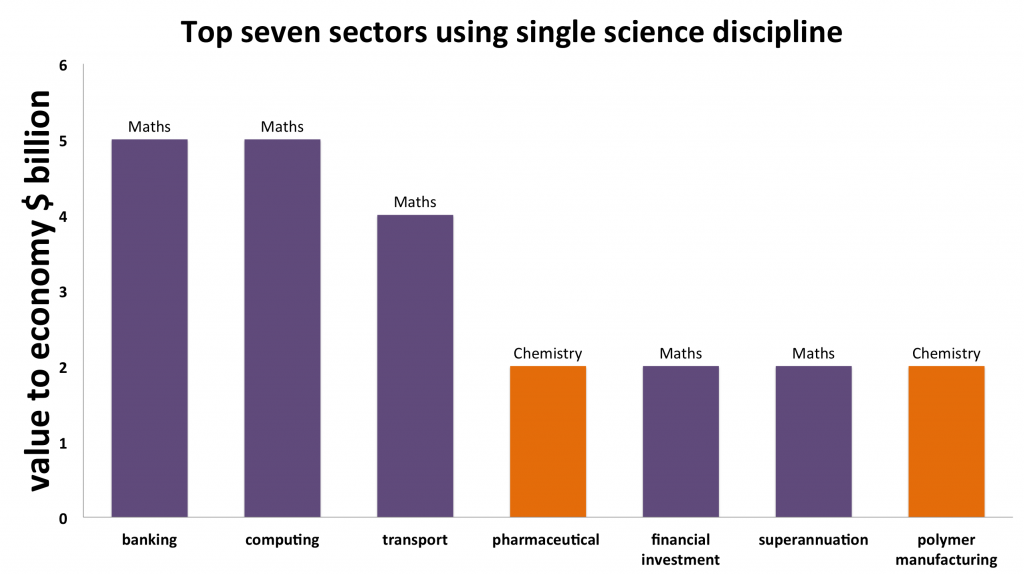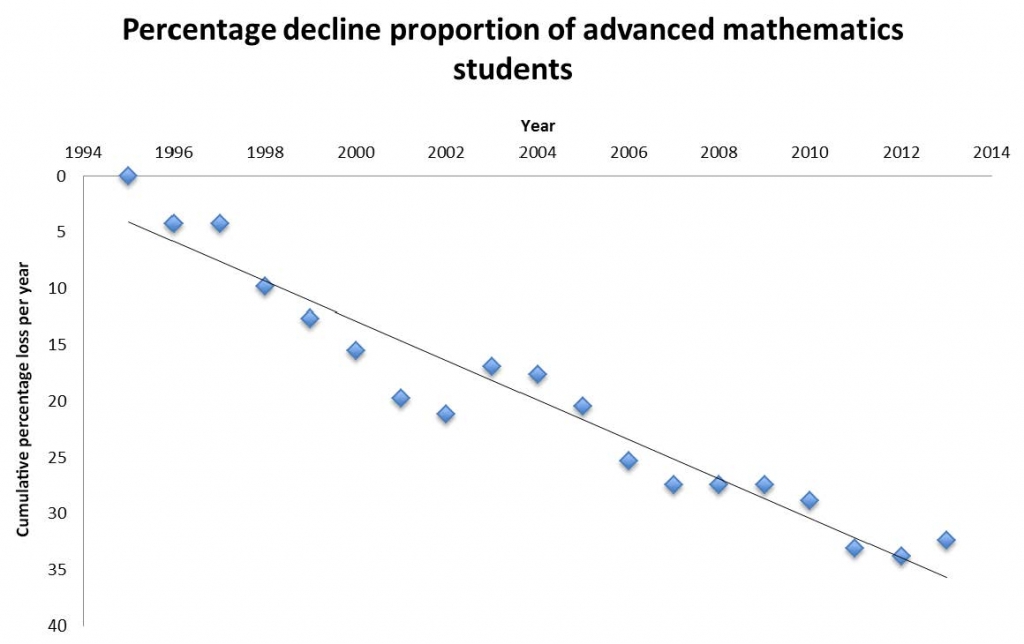Vision for a maths nation – building policy on evidence
MELBOURNE, THURSDAY 6 AUGUST 2015: Australia’s future as a high technology, research-driven economy will depend on reversing 20-year trends in the mathematical sciences, according to a new report by the Australian Mathematical Sciences Institute (AMSI).
Today, AMSI release their fourth annual Discipline Profile of the Mathematical Sciences. At a time when the Australian government is responding to the Chief Scientist’s call for a strategic plan for Science, Technology, Engineering and Mathematics (STEM) it is a reminder that we cannot continue to rely on piecemeal programs tied to the electoral cycle.
The data collected for the 2015 publication paints a mixed picture of Australian engagement with the mathematical sciences.
86 per cent of science degrees do not have intermediate mathematics as an entry prerequisite while Year 12 enrolments slide
In fact, mathematics prerequisites for entry into science, commerce and engineering degrees are at historic lows.
AMSI Director, Professor Geoff Prince insists: “Universities must phase in restoration of maths prerequisites; the lack of them sends a negative and misleading message to schools about the value of these subjects.”
Intermediate and advanced mathematics subjects are the gateway to quantitative professions; the 20-year decline in participation is choking the country’s galloping demand for graduates with these skills. And it has the potential to halt the nation’s productivity growth.
At least 30 per cent of Year 7-10 maths classes are taught without a qualified maths teacher
This figure is more than double the international average and must be repaired as part of our STEM planning.
In order to secure the future supply of mathematics teachers we need to know why potential educators aren’t choosing to be maths teachers. The only immediate solution is to provide professional development to the many conscientious and professional educators teaching maths out-of-field.
This is a national issue requiring national leadership; state and federal governments must act together to solve the teacher supply problem.
Women make up only 30 per cent of undergraduate maths enrolments holding back our STEM workforce and productivity growth
The proportion of females represented at all stages of the mathematics pipeline is inadequate. A significant consequence of this is that female adult numeracy is below that of males – around 30 per cent in some age groups. And, in terms of the national economy, it is widely recognised that weak participation by women in STEM fields is handicapping Australia’s productivity and competitive advantage.
“We are proud to be working with the BHP Billiton Foundation to increase participation of girls and women in study and career pathways involving mathematics and statistics,” says Professor Prince.
Maths’ multi-billion dollar value to the economy under threat as PhD rate stagnates
A 2015 report by the Australian Academy of Sciences indicates that, of those business sectors based on a single core discipline, mathematical sciences account for the top three (and five of the top seven). The report also highlighted that the direct impact of advanced physical and mathematical research is worth $145 billion to the economy per year, the flow-on impact amounts to $292 billion per year. This is in stark contrast to 54 per cent of adult Australians having only basic numeracy skills and the proportion of Year 12 students studying “harder” maths in steady decline.
“Unfortunately, this stellar contribution hides an alarming trend,” says Professor Prince. “Governments are trying to drive up business employment of STEM trained research professionals, however, domestic PhD numbers in the mathematical sciences are among the very lowest in the OECD. Universities and businesses must improve engagement to maximise the economic benefits of mathematics and statistics.”
The 2015 Discipline Profile of the Mathematical Sciences is accompanied by a policy document —Vision for a maths nation — that identifies four key priorities to reverse these confronting trends:
- Restore university maths prerequisites from their historic low and turn around declining school mathematics enrolments
- Train the unqualified teachers of school mathematics and secure the supply of future qualified maths teachers
- Increase the number of girls studying maths and women employed in the quantitative professions.
- Boost the engagement of Australian business with mathematical sciences research
Australia’s Chief Scientist, Professor Ian Chubb, has called for action: “It’s time to do what so many other countries have already done: take a long-term strategic view of STEM’s pivotal role in securing a stronger Australia.”
— ends —
For Interview:
Professor Geoff Prince
Director, AMSI
M: 0407 546 336
E: director@amsi.org.au
Media contact:
Stephanie Pradier
Media Communications, AMSI
M: 0424 568 314
E: stephanie@amsi.org.au
RESOURCES:
2015 Discipline Profile of the Mathematical Sciences
Prerequisites, or lack thereof: Data can be found in Table 2.10 (page 13) 2015 Discipline Profile of the Mathematical Sciences


Value of the mathematical sciences to Australia’s economy, looking at the top seven sectors that use a single science discipline. The mathematical sciences have a value of $18 billion of the $22 billion per year to the Australian economy of across these top seven sectors: Data from Table 4.2 (page 38) 2015 Discipline Profile of the Mathematical Sciences

Falling participation rates in advanced mathematics enrolments: Figure 2.7 (page 12) 2015 Discipline Profile of the Mathematical Sciences



